8. Twin Peaks: Fire Walk With Me (1992)
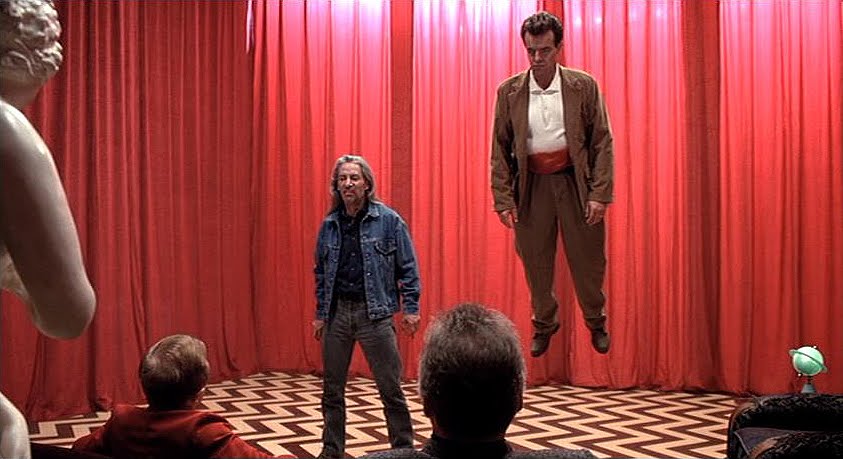
For a long time, David Lynch’s prequel to his seminal television series Twin Peaks was one of the most despised movies ever made. With a new series on the way it’s time for a fresh perspective, and upon re-evaluation, it’s clear that Fire Walk With Me is, at the very least, one of most bold and underappreciated films ever made about the American suburbia.
The film centres on the FBI investigation into the murder of Teresa Banks (Pamela Gidley) and the final week of high school popular Laura Palmer’s life (Sheryl Lee).
The second season of Twin Peaks ended with a cruel number of cliff-hangers – a cynical jab at the television format and its endless episodic nature – while Fire Walk With Me opens with a television being shattered by an axe. Fire Walk With Me, as a prequel, backtracks and actually subverts the mythology of Twin Peaks, treating it just as another deceptive image disguising the true nightmare.
It sways uncertainly, though graphically, between the supernatural horrors of demons and the real horrors of family abuse. It’s a movie fascinated by dreams; ironically most audiences went into the film with a hopeless dream of returning to the whacky TV town they feel in love with. Given the stroboscopic, subtitled sequences of seedy strip clubs and telepathic, backwards-speaking creatures, they were more than a little shocked.
Twin Peaks: Fire Walk With Me is a cult masterpiece, and is by far one of most underrated films of the 1990s. It’s worrying because it reminds us that the suburban dream is so murky and deep it’s hard to see the bottom. What evils are lurking in those shadows?
7. A History of Violence (2005)
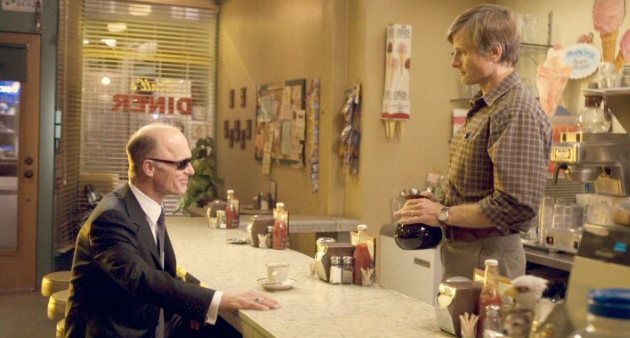
Generally speaking, the villains in David Cronenberg movies come from within the human mind and body; they corrupt one’s very identity. A History of Violence isn’t an exception; violence is a trait engrained into the hero’s very nature, and the pleasant image of a calm, suburban life will do little to mask it.
An act of violence sends Tom Stall (Viggo Mortensen) and his family on a downward spiral of savagery and turmoil.
Ultimately it becomes a question of nature vs. nurture. Cronenberg presents two sides to the hero: a life of violence and crime which he was born into and the calm suburban life which he’s adopted.
The animal or the man, who are we really? It’s an age-old thought experiment which is put to practice when two men try and rob Tom’s restaurant. It’s a heart-stopping scene in which he survives through an act of violence. Would he have had done so had he not been a mobster in his previous life? No.
The suburbia is presented merely as a cloak which we throw over our darker, animalistic urges: to kill and to lust. It’s a strangely Darwinian film which asserts that humanity, when placed in a scene of crisis, will forget all societal values and act by their primal nature. The story of evolution is in fact a history of violence.
Despite being a neo-noir, A History of Violence shows the usual hallmarks of a Cronenberg film: identity crisis, the internal vs. the external, sudden violence, the bizarre, often-painful nature of sex, mutation of the psyche and the simple absurdity of life. It’s a great film that proves there’s something violent and primordial swirling out there in the shadows of the “modern-day” suburbia.
6. Halloween (1978)
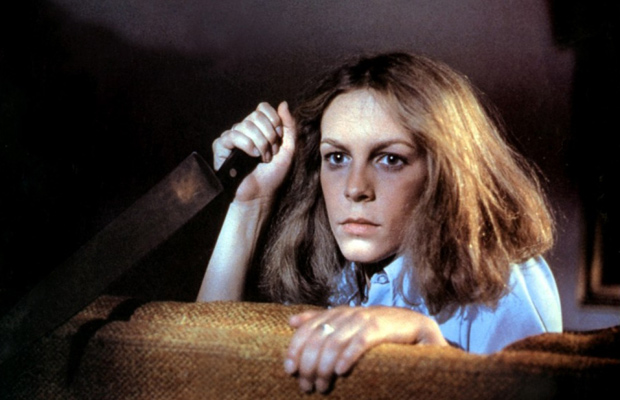
The 1970s gave rise to a new faction of horror films that didn’t take place in a backwoods motel or some Victorian mansion, but in the safety and the security of the neighbourhood. While some attention deserves to go to the slashers which proceeded it, John Carpenter’s Halloween was, in truth, the start of it all: it warned that the suburbia made its own monsters and would punish all those who strayed from its laws.
Mike Myers (Nick Castle), an escaped mental patient, returns to the town where 15 years earlier he killed his sister, to stalk a new group of teenagers.
Meyers is a simple but terrifying villain; a monster born and bred in the suburbia. Whether he’s a masked figure disappearing behind a hedge in the distance or a ghost under a bedsheet, he comes to represent that anonymous evil lurking in the shadows. We can’t comprehend him or, as it becomes apparent, destroy him.
Whereas most horror movies before it punished its victims for transgressing a physical boundary and entering an evil foreign place, Halloween punished its victims for transgressing moral boundaries. It helped establish slasher’s strict “laws”, where youth were punished for having sex, taking drugs and, quite simply, for being young.
Here the suburbia was its own gothic space, which punished those teenagers who refused to cohere to the conservative guide-lines of modern America.
Halloween is undoubtedly one of the finest and most important horror films ever made. It paved the way for countless horror masterworks which took place in the suburbia, from A Nightmare on Elm Street to It Follows.
5. Donnie Darko (2001)
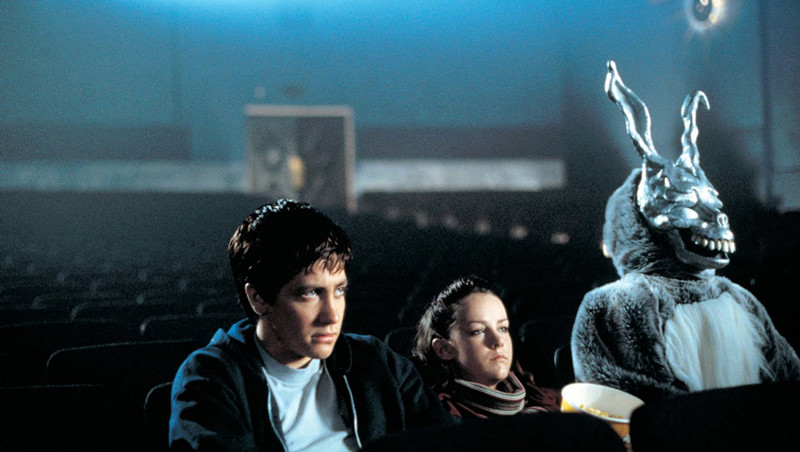
Richard Kelly’s debut is an enigma which deserves more than one viewing. Packed with indescribable menace and jarring philosophy, Donnie Darko is a bold kind of psychological sci-fi that digs beneath the guise of the suburbia and implores us to ask what’s beneath.
A deranged teenager (Jake Gyllenhaal), after receiving a prophecy that the world will end, begins having visions of a large bunny rabbit who manipulates him to perpetrate a series of crimes.
The director’s cut would later offer some light on the answers, but the original release (probably the one worth watching) offered up several pieces to a puzzle – an aeroplane engine, a boy in a bunny suit, a book on the philosophy of time travel – which was never fully solved.
It’s this opaqueness which makes the ordinary seem cosmological and infinite. We recognise the teen movie archetypes like the outcast teenager, the high school romance, the absurdly conservative teacher and the secret rebellion. All of which, we learn, is merely a disguise.
We’re offered hallucinogenic sequences of portals appearing from people’s chests and of bunnies rupturing time and space. When Donnie asks Frank why he wears the bunny suit, he’s replied with the question of why he wears a “human suit”.
If that’s true and we’re really wearing suburban life like a mask, then what are we hiding beneath? Interpretations aside, Donnie Darko is a piece of bold, fascinating storytelling, packed with a great lead performance and a cracking soundtrack, that deserves to been seen, and then seen again.
4. Happiness (1998)
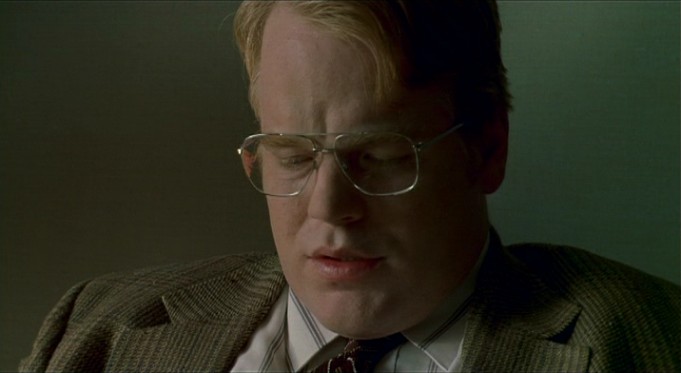
Todd Solondz’s entire career as a writer-director could be labelled “suburban gothic”; his films are characterised by grim, darkly-funny jabs at the seedy underbelly of the middle-class neighbourhood. Happiness is most likely his best film; a highly-controversial, downright disturbing satire of suburban life which is as dark as comedy comes.
It’s essentially a group of intermingling tales, following several people in their pursuit for happiness, often through dark and perverted means.
What’s troubling is that the actual filmmaking seems incongruous with the movie’s taboo subject matter. Though we pass through heavy issues of paedophilia, rape, suicide and murder, the film is unnervingly reminiscent of a sitcom: it moves between narratives like a soap opera, it’s filled with heart-to heart conversations, the music is benign, and the cinematography is clean and bright.
Pick nearly any frame and you’d be hard-done trying to find the horror in it.
While the humour is pitch-black, it doesn’t exploit its controversial themes. Humour is often needed as a torch and a safety-rope when entering those darkest, darkest recesses of the human psyche. But in Happiness the humour is even more than that; Solondz seems to be getting at how easy looks and even emotions can deceive us.
Put simply, the suburbia isn’t as it seems. Happiness is a film that isn’t for everyone, but those who can endure its achingly black humour will be given an honest, subversive look at the dark, loveless nightmare at the heart of the neighbourhood.
3. Heavenly Creatures (1994)
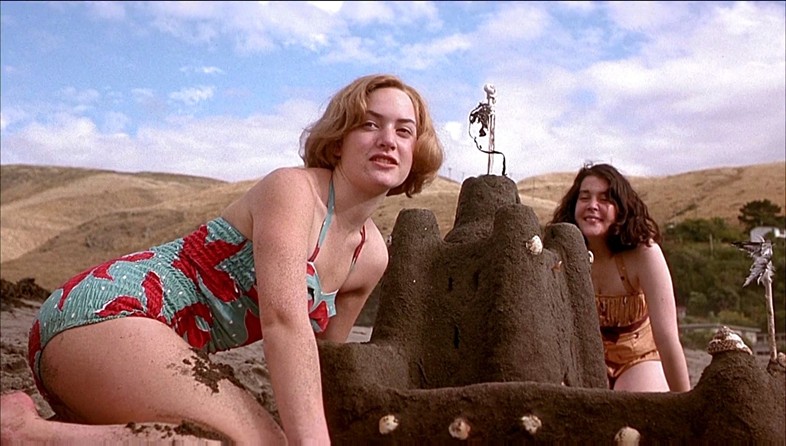
This was the film that launched director Peter Jackson from cult circles and into the mainstream. A poignant blend of suburban gothic, true crime, coming-of-age, dark romance and tragedy, Heavenly Creatures, to this day, remains one of the best looks at the heartache gnawing at a community.
The film recounts the true story of Pauline Parker (Melanie Lynskey) and Juliet Hulme (Kate Winslet): two schoolgirls who formed an intimate relationship which eventually ended in murder.
Like Blue Velvet, Heavenly Creatures immediately establishes the sensation of digging beneath the veneer of the perfect small town and discovering the dark underbelly beneath. A narrator guides us through some archival footage of Christchurch, showing us a suburban utopia populated by friendly bicycle-riders and vibrant yellow daffodils. Then screaming is heard and we cut away to two girls, drenched in blood, fleeing from the woods.
The remainder of the film is a conflict between this harsh and violent reality and the wondrous dream which we convince ourselves that we’re living. It’s this tension between the real neighbourhood and the imaginary medieval castle that leads to the heartbreaking tragedy.
It’s a devastating thought to consider that had the girls lived in another time or another place, their friendship would never have ended in such a terrible way. It’s the suburban setting which is their downfall.
Carried by great performance from its two young leads, Jackson’s precise direction and an excellent screenplay co-written by Fran Walsh, Heavenly Creatures remains one of the best features New Zealand has ever produced.
2. Edward Scissorhands (1990)
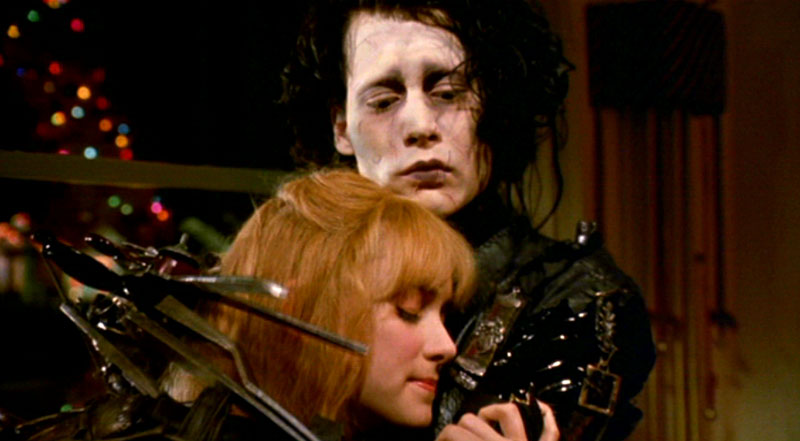
Few living directors understand the gothic genre quite as well as Tim Burton. In Edward Scissorhands – arguably his greatest film – Burton once again displayed his flair for the dark and the magical, creating a fairy-tale which didn’t take place in an old black forest but in the gaudy “utopia” of modern America.
A man with scissors for hands (Johnny Depp), living in complete isolation, is adopted by a family and taken into their community.
It’s not hard to see Burton’s love for gothic in the movie: Edward’s ghostly castle recalls the tradition of German Expressionism, the basic tale of a victimised monster essentially follows the storyline of James Whale’s Frankenstein and Vincent Price himself even makes an appearance as the Inventor.
Such old and dark traditions clash head on with the suburbia’s bloated values of beauty and community. Edward, near-silent and clad in black leather, is thrown into a world of scarlet dresses and gossiping housewives.
The neighbourhood should be a familiar. Ironically however, Burton paints it as a weird, foreign place of exaggerated characters and houses of green and pink and blue and yellow. Danny Elfman’s score hums with equal parts enchantment and yearning, recalling that sensation of seeing something new for the first time. Meanwhile Edward’s shadowy mansion, blanketed in snow, becomes a place of innocence and security.
Like many suburban gothics, Edward Scissorhands is essentially a warning of conformity. It’s a tale of an individual who did not cohere to the strict rules of the middle class neighbourhood; he’s treated first as an oddity and then as a monster to hunt out and destroy.
Resembling a kind of suburban fantasy, Edward Scissorhands is a film which is at once timeless and contemporary. It’s one of the very few films which finds both darkness and beauty in the everyday.
1. Blue Velvet (1986)
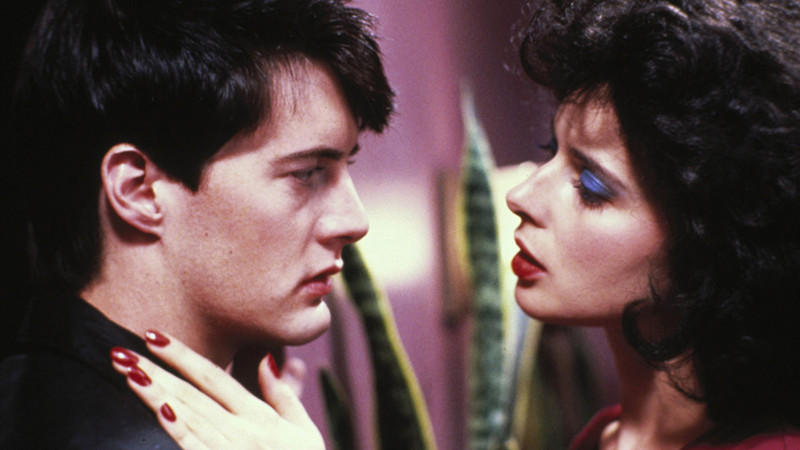
For thirty years, David Lynch’s suburban nightmare has been one of the most disquieting, influential and talked-about American films ever made. Blue Velvet – a curious blend of neo-noir, melodrama, erotic thriller, surrealism and psychological horror – remains the penultimate suburban gothic; the perfect illustration of a community seduced by fancies yet grounded in nightmares, of a two-faced American Dream smiling in the sun yet festering in the night.
When a young man (Kyle MacLachlan) discovers a severed ear in a field, his private investigation sends him into the dark, perverted underground of his small town.
The opening alone could carry the meaning of Blue Velvet. First we’re given the dream: Bobby Vinton’s romantic vocals move us through warm images of vibrant red roses and golden daffodils and of a man watering his lawn in soft focus. Then we’re given the nightmare: water begins to burst violently from the hose, the man has a heart-attack, and then we go into the dark undergrowth to see a hoard of beetles devouring away.
On one hand we’re given a welcoming, often-comical picture of the perfect, Reagan-era town, filled with colour, romance and music. On the other we’re given a much darker picture painted with deep, dreamish reds and blues, where the characters are weird and desire has become something violent, cruel and all-around terrifying.
Which one is the real place and which is the dream? Unnervingly, they’re merely two sides of the same coin. Blue Velvet represents a descent both into the dark, beating heart of a community and into the unseen, perhaps supernatural, reaches of the human soul.
Bravely acted and genuinely unsettling, Blue Velvet remains a must-see for any cinephile. It’s one of the great American films because it actually says something of the country, its hopes and its fears. It’s the bug beneath the lawn, the ear in the garden, the uncanny sign that it’s a strange world indeed.
Honourable Mentions:
Other worthwhile films that could be said to be “suburban gothic” include: Lolita (1962), The Stepford Wives (1975), The Amityville Horror (1979), A Nightmare on Elm Street (1984), Fatal Attraction (1987), The Stepfather (1987), The Burbs (1988), Parents (1989), The People Under the Stairs (1991), Serial Mom (1994), Little Children (2006), The Girl Next Door (2007), Snowtown (2011), The Babadook (2014), It Follows (2015) and Suburban Gothic (2015), as well as the television series Twin Peaks and American Horror Story.
Author Bio: Kyle McDonnell is an aspiring filmmaker based in Sydney, Australia. He recently graduated from high school and hopes one day to emulate his screen heroes David Lynch and Ben Wheatley. When he’s not watching, writing or filming, he can be found listening to ‘The Smiths’, contemplating life.